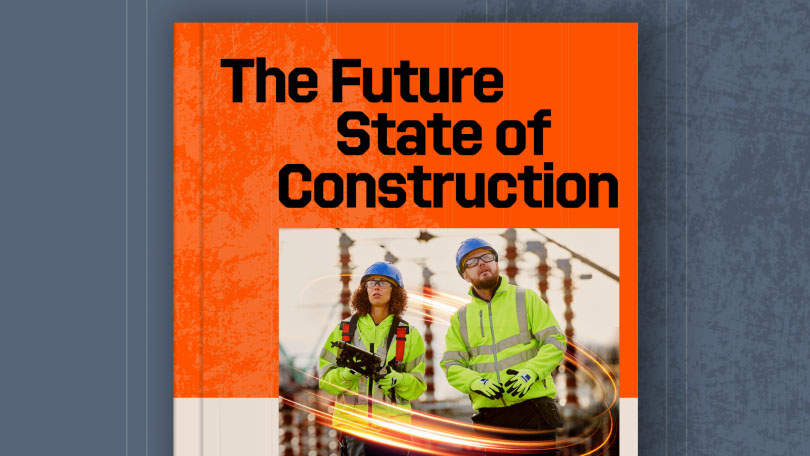— 6 min read
UK Construction Tendering Routes


Last Updated Nov 25, 2025

Emma De Francesco
Strategic Product Consultant
21 articles
Emma is currently Strategic Product Consultant at Procore where she loves partnering with clients to help them achieve the best possible results. She has worked as a Project Manager in previous roles, responsible for overseeing small to medium-sized projects across various sectors including commercial, health and lifestyle, retail, government and hotels. Throughout these projects, she managed everything from project costs, program and quality & safety, to design management, procurement, and authority approvals.

Janine Trinidad
Staff Trainer and Program Manager
25 articles
Janine Trinidad is a Construction Educational professional for Procore Technologies. In previous roles, Janine managed all phases of construction on hotel, mixed-use, and institutional projects in the San Francisco Bay area. She was responsible for negotiating contract budgets and change orders, managing RFIs and submittals, and overseeing quality control, among other duties. She is also a certified transformational coach with a focus on women-centered and trauma-informed methods. She is passionate about transforming the construction industry to be a healthier, more successful and welcoming place to work and believes technology and education are allies in doing so.

Nicholas Dunbar
Content Manager
62 articles
Nick Dunbar oversees the creation and management of UK and Ireland educational content at Procore. Previously, he worked as a sustainability writer at the Building Research Establishment and served as a sustainability consultant within the built environment sector. Nick holds degrees in industrial sustainability and environmental sciences and lives in Camden, London.

Zoe Mullan
27 articles
Zoe Mullan is an experienced content writer and editor with a background in marketing and communications in the e-learning sector. Zoe holds an MA in English Literature and History from the University of Glasgow and a PGDip in Journalism from the University of Strathclyde and lives in Northern Ireland.
Last Updated Nov 25, 2025

Choosing the right tender route can shave months off a programme and millions off a budget. In the UK construction sector, developers and contractors don't just build structures – they build relationships through the tendering process, seeking partners who will help deliver projects safely, on time and on budget.
Several competitive tender routes exist worldwide, yet the most common types used in the UK are:
- Open tendering
- Negotiated tendering
- Selective tendering
- Single-stage tendering
- Early Contractor Involvement (ECI) or two-stage tendering
Below, we'll explore the main types of tender, outline the pros and cons of each approach and show where frameworks and serial tendering fit alongside them.
Table of contents
5 Main UK Tendering Routes
Each tendering approach brings distinct advantages and disadvantages that buyers must weigh before inviting tenders. Importantly, these routes aren't mutually exclusive. A developer may publish an opportunity on Find a Tender Service (FTS) while simultaneously inviting a few trusted suppliers – allowing like-for-like comparison and ensuring the job meets standards.
1. Open Tendering
With open tendering, a developer or main contractor invites tenders from all interested contractors by publicly advertising an Invitation to Tender (ITT) that includes specifications and drawings. The notice appears on Contracts Finder and FTS, promoting fairness, transparency and competition. Contractors respond with a tender that sets out their price, programme and methodology.
Both private and public construction use open tendering, though it appears almost universally in the public sector and less commonly on private projects. Open tendering usually increases competition, often producing lower prices. However, many buyers use a standard Selection Questionnaire (SQ), PAS 91, or the Common Assessment Standard (CAS) to ensure only qualified firms submit a tender.
2. Public Project Requirements
Public projects – those procured or funded by central government, local authorities or NHS trusts – must legally comply with the new Procurement Act 2023, replacing the old Public Contracts Regulations 2015 (PCR 2015). Contracts for works above £5,372,609 or services above £214,904 require open advertisement, with award criteria disclosed in advance.
Public bodies typically apply a weighted ranking based on price and quality. Value for money demands a balanced assessment of:
- Whole-life benefits realised
- Environmental, social and economic factors
- Risks related to delivery
Even within an open process, contracting authorities seek capable suppliers. Therefore, the SQ requests evidence such as:
- Relevant project experience
- CVs of key personnel
- Current workload and turnover
- Financial standing and insurance
- Health and safety performance
Multiple tenders allow like-for-like comparison, helping the client appoint the Most Advantageous Tender (MAT) – the new standard under the Procurement Act 2023 that prioritises value and social impact over lowest price.
While the tender process is transparent and the final Contract Award Notice is published publicly, the specific details of unsuccessful bids remain commercially confidential.
3. Negotiated Tendering
Negotiated tendering involves a developer or main contractor working directly with one bidder to agree on price and contract terms. This route suits complex refurbishments – for example, live NHS hospital works – where early collaboration reduces risk.
By negotiating with a known partner, the buyer streamlines the process, avoiding lengthy SQ evaluation and bid levelling. During negotiation, client and contractor jointly develop a realistic budget, minimising cost overruns. The downside centres on the absence of price comparison; consequently, many clients commission an independent quantity surveyor to benchmark the agreed price against market rates.
4. Selective Tendering
With selective tendering, the developer or main contractor invites a shortlist of contractors – often three to six – to tender. This represents the most common route on private UK projects requiring a high degree of management or specialist trade expertise.
Developers shortlist contractors based on existing relationships, past performance or specific skills. Digital tender platforms accelerate document distribution, while larger contractors often maintain a pre-qualified supply chain.
Selective tendering provides greater quality control: trusted contractors reduce risk and help projects mobilise quickly, though reduced competition can lead to inflated prices. Nevertheless, many clients find that the time and quality benefits outweigh the potential cost premium.
5. Single-Stage Tendering
In a single-stage tender, the invitation is issued once design information reaches sufficient completion for contractors to price the entire scope realistically. After receiving tenders, the employer evaluates and awards them all at once – suited to projects with stable designs and tight deadlines.
Early Contractor Involvement
Early Contractor Involvement (ECI), often called two-stage tendering, splits the process into distinct phases:
Stage 1 – Preconstruction Services
The preferred contractor provides buildability advice, programme input and value-engineering during design development, typically on a reimbursable or preliminaries-plus-fee basis.
Stage 2 – Construction Contract
When drawings reach an agreed level of detail, the contractor submits a firm price. Although the Stage 1 contractor receives no contractual guarantee of securing the construction phase, their early involvement and design knowledge provide a significant competitive advantage.
Two-stage tendering is popular for complex projects such as data centres or heritage refurbishments, where collaboration and early risk identification matter more than the lowest price.
Alternative Procurement Routes
Beyond the five main approaches, two additional routes offer specific advantages for repeat work and multi-project programmes.
Framework Agreements
Frameworks, permitted under PCR 2023 (and PCR 2015), let a public or private client appoint a panel of suppliers for up to four years. Clients then award call-off projects via mini-competitions among framework contractors, maintaining competitive tension while saving procurement time. The Crown Commercial Service Construction Works and Associated Services framework stands as a well-known UK example.
Serial Tendering
Serial tendering asks contractors to competitively price a schedule of rates that clients can apply across repeat projects – ideal for local authorities delivering multiple school refurbishments. It offers cost certainty and efficiency over a programme of similar works.
Why Route Selection Matters
Tendering forms a vital part of construction and ensures the employer secures the highest quality work at the best value. By understanding each route and defining clear project parameters, developers and contractors can mitigate risk, maximise efficiency and deliver value.
Also, maintaining a historic cost database of tenders further reduces inefficiencies, protects profitability and informs future budgets. Taking a proactive approach to preconstruction, especially tendering, sets the foundation for success and keeps projects on time, on budget and compliant with specifications.
Contractor Tendering Checklist
Construction professionals can use this quick reference to stay on track:
- Review the Selection Questionnaire (SQ)
- Gather policies: equality, environmental, health-and-safety
- Compile evidence of similar projects and references
- Confirm bonding and insurance levels
- Price the Bill of Quantities (BoQ) accurately
- Double-check arithmetic and programme durations
- Upload documents to the e-tender portal before the deadline (usually 12:00 noon)
- Attend clarification meetings
- Sign and return the Form of Tender and Contract Data
Frequently Asked Questions
What are the different types of tendering?
Open, selective, negotiated, single-stage, two-stage, framework and serial tendering.
What are the four core tender routes?
Open, selective, negotiated and framework call-off.
Can you give examples of a tender?
- A lump-sum open tender for a primary school extension
- A selective NEC Option A package for façade works
Which contract forms follow tendering?
JCT Standard Building Contract, JCT Design & Build, NEC4 Engineering & Construction Contract and PPC2000.
Categories:
Written by

Emma De Francesco
Strategic Product Consultant | Procore
21 articles
Emma is currently Strategic Product Consultant at Procore where she loves partnering with clients to help them achieve the best possible results. She has worked as a Project Manager in previous roles, responsible for overseeing small to medium-sized projects across various sectors including commercial, health and lifestyle, retail, government and hotels. Throughout these projects, she managed everything from project costs, program and quality & safety, to design management, procurement, and authority approvals.
View profile
Janine Trinidad
Staff Trainer and Program Manager | Procore Technologies
25 articles
Janine Trinidad is a Construction Educational professional for Procore Technologies. In previous roles, Janine managed all phases of construction on hotel, mixed-use, and institutional projects in the San Francisco Bay area. She was responsible for negotiating contract budgets and change orders, managing RFIs and submittals, and overseeing quality control, among other duties. She is also a certified transformational coach with a focus on women-centered and trauma-informed methods. She is passionate about transforming the construction industry to be a healthier, more successful and welcoming place to work and believes technology and education are allies in doing so.
View profileReviewed by

Nicholas Dunbar
Content Manager | Procore
62 articles
Nick Dunbar oversees the creation and management of UK and Ireland educational content at Procore. Previously, he worked as a sustainability writer at the Building Research Establishment and served as a sustainability consultant within the built environment sector. Nick holds degrees in industrial sustainability and environmental sciences and lives in Camden, London.
View profile
Zoe Mullan
27 articles
Zoe Mullan is an experienced content writer and editor with a background in marketing and communications in the e-learning sector. Zoe holds an MA in English Literature and History from the University of Glasgow and a PGDip in Journalism from the University of Strathclyde and lives in Northern Ireland.
View profileExplore more helpful resources

Control the Chaos: Standardising Document Workflows in Construction Projects
Document control and implementation play a central role in managing risk, meeting deadlines, and delivering projects to spec. As builds become more complex and teams increasingly disperse, the volume and...

Cost-Plus Construction Contracts in the UK
A construction cost-plus contract – sometimes called a cost-reimbursable or prime cost contract – reimburses all project costs and adds a fee to cover the contractor’s overhead and profit. UK...

Digital Construction Technology for Whole-Life Value
For decades, the construction industry has kept a narrow focus on capital cost — the one-time, upfront costs of a construction project. While in the short term this seems like...

UK Construction Progress Reports: Tools for Smarter Site Management
Construction progress reports track completed work, on site issues, costs, and safety so UK project teams can demonstrate progress, secure payments, and stay on programme. Accurate progress data is essential...
